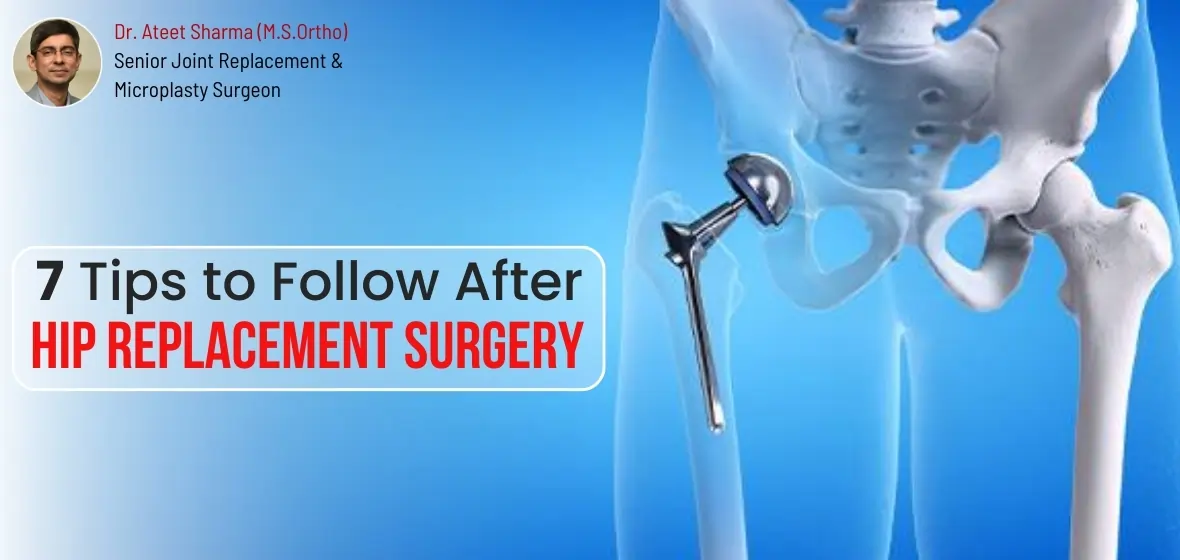
Hip discomfort can notably slow you down, making it hard to move around and accomplish the things you like. Every year, hundreds of thousands of individuals have Hip Replacement Surgery to relieve pain and return to full mobility. The operation is a significant step, but what occurs next is equally crucial. A smooth recovery might help you walk confidently again much sooner. Here are 7 Tips to Follow After Hip Replacement Surgery:
(1) Meeting Targets Before Leaving Hospital

(2) Stick to Your Rehabilitation Plan
(3) Maintain a Healthy Diet
Eating a healthy diet is very important after hip replacement surgery. Good nutrition helps your body heal faster and can reduce the risk of complications. Here are some key points:
(4) Preparing Your Home for Hip Replacement Recovery
To ensure a smooth recovery process after hip replacement surgery, take proactive steps to prepare your home environment:
By implementing these measures ahead of time, you can create a supportive and safe home environment conducive to a successful hip replacement recovery.
(5) Ensure Proper Wound Care:
Good wound care is essential after hip replacement surgery to avoid infections and promote a smooth, complete recovery. Proper surgical wound care not only accelerates healing but also reduces the chance of complications that might postpone your return to regular activities. Here are some key steps to take for good wound care:
(6) Follow-up and Check-up
Regular check-ups and follow-up appointments after hip replacement surgery are required for monitoring your healing progress, analysing your range of motion, managing pain, and providing guidance on physical therapy. During these appointments, your healthcare provider will evaluate your surgical wound, track your hip joint's mobility, and adjust your pain management and medication regimen as needed. Physical therapists will offer advice on exercises to improve strength and flexibility and address any concerns you may have about your recovery.
(7) Patience and Persistence
Recovery following hip replacement surgery is a long process that demands patience and perseverance. Recognize that recovery takes time, and results may vary from person to person. Stay committed to your rehabilitation plan, listen to your healthcare provider's advice, and don't be disheartened by setbacks or slower-than-expected progress. Celebrate minor success along the way, and believe that with dedication and determination, you will reach your objectives of living a full and active life after surgery. Remember that healing is a journey, and every step forward contributes to your total well-being and mobility.
Finally, we have reached the end of our guide on the 7 Tips to Follow After Hip Replacement Surgery. By following these recommendations, you'll be well on your way to regaining your mobility and independence.
Remember, you're not alone in this journey. The team at KD Hospital is here to support you every step of the way. These tips are just a starting point. If you have any questions or experience any pain or discomfort during your recovery, don't hesitate to reach out to Dr Ateet Sharma, a well-known as specialised Robotic Orthopedic Surgeon. We're here to guide you toward a successful and comfortable recovery.
© 2025 Dr.Ateet Sharma All rights reserved. | Manage by Nexus